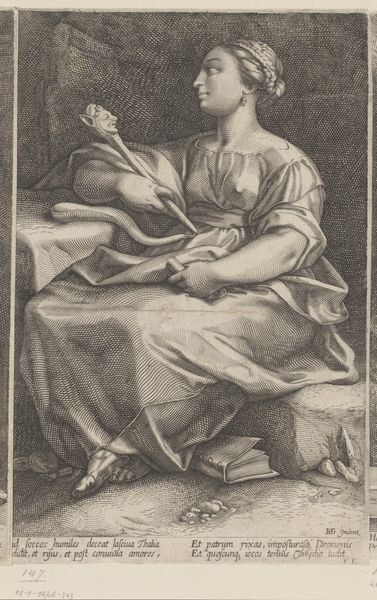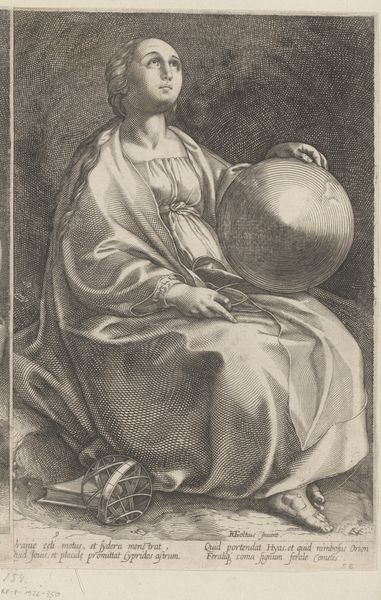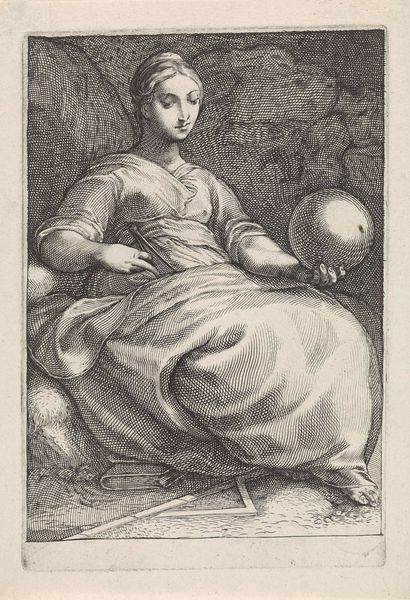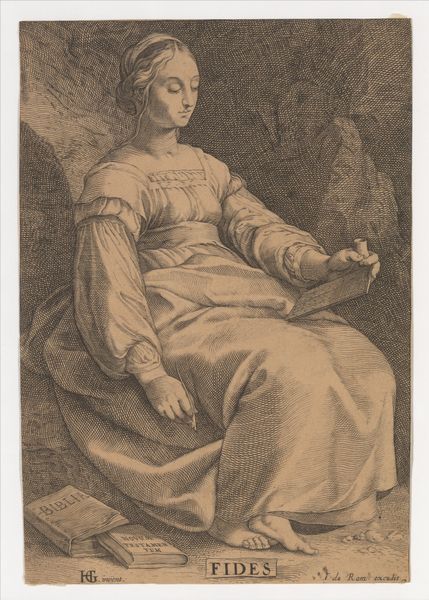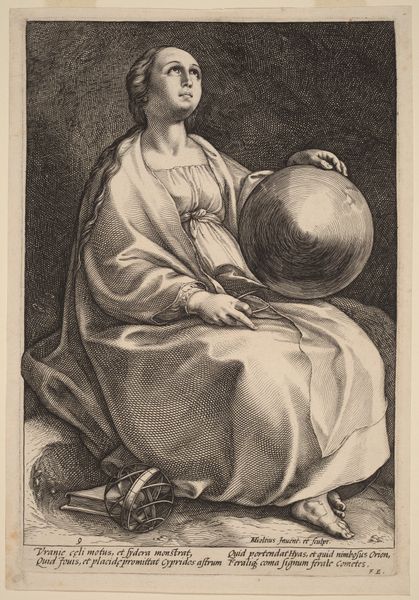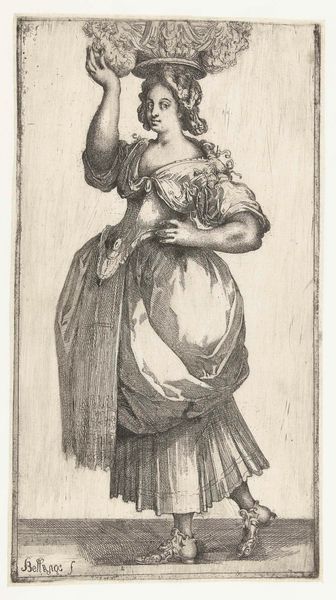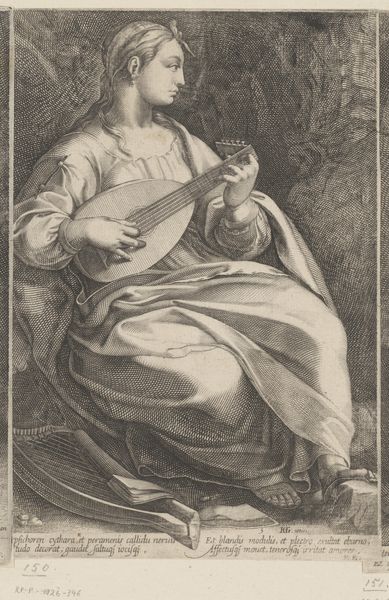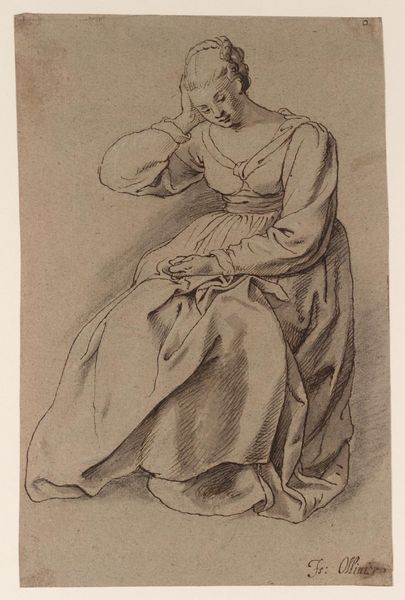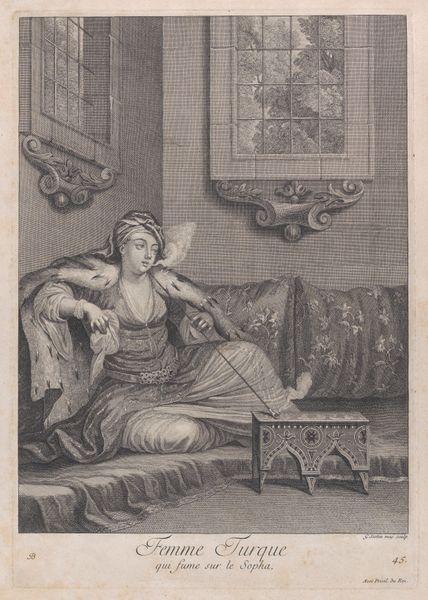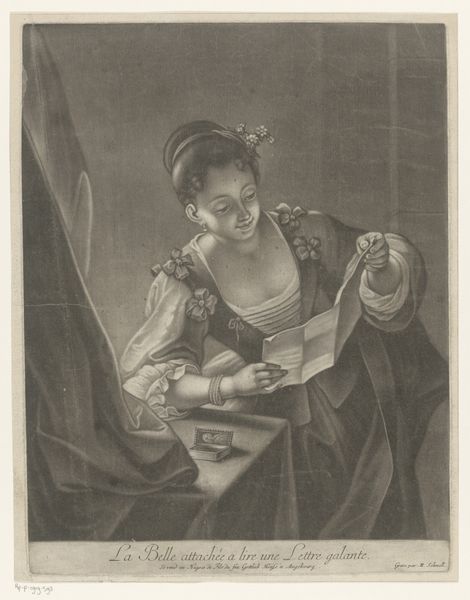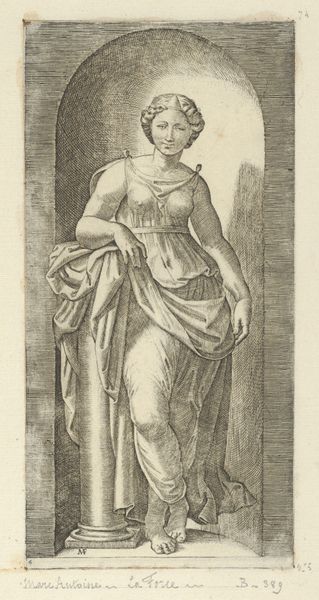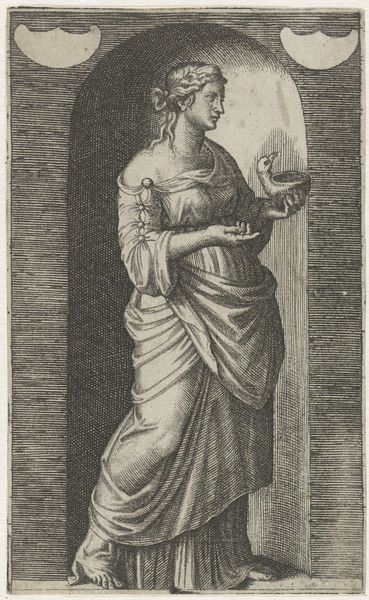
engraving
#
portrait
#
baroque
#
figuration
#
11_renaissance
#
history-painting
#
engraving
Dimensions: height 243 mm, width 163 mm
Copyright: Rijks Museum: Open Domain
Editor: This is "Erato," an engraving by Charles David, created sometime between 1605 and 1638. The figure's pensive gaze and the detailed lines create an atmosphere of thoughtful contemplation. I'm intrigued by the orb she's holding. How do you interpret this work, particularly considering its historical context? Curator: Considering the piece historically, the subject matter is very relevant. Erato, the muse of lyric poetry, was often invoked during this period. It’s essential to view engravings like this as reproductive media, circulating imagery and ideas in a period before mass media. They functioned almost like visual pamphlets. The "politics of imagery" come into play here – how does the artist choose to represent Erato and why? Editor: So the image is conveying a political message, then? It's interesting that the engraving could serve almost like a form of propaganda! Curator: It’s more complex than that. This era sought to recapture Classical ideals of beauty. Who had access to such imagery and ideas? Whose stories were told and amplified? Furthermore, how do the museum and the art market perpetuate that even now? Those are all really pertinent questions. Note how her gaze doesn’t meet ours directly. She’s idealized, remote, perhaps embodying an intellectual pursuit available to only a select few at the time. Editor: It is very true. Looking at it through that perspective of limited access changes my view. The engraving isn’t just an artwork but is reflective of a social order. Curator: Exactly! Reflecting on its journey through history, from creation to display within the Rijksmuseum, prompts us to ask vital questions about accessibility, representation, and power within the art world. Hopefully, that informs your appreciation now. Editor: It definitely does. Now I understand the significance of the historical context a lot better. Thanks!
Comments
No comments
Be the first to comment and join the conversation on the ultimate creative platform.
